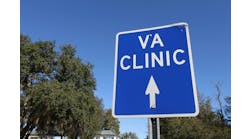Oregon-based nonprofit OCHIN, which for years has been hosting Epic for a growing network of community health centers nationwide, is expanding its offerings to rural hospitals. The organization has four hospitals already live on the new system and five more onboarding across six states.
The first acute care member to go live on OCHIN Epic in June was Minidoka Memorial Hospital in Idaho, joining a nationwide network of about 30,000 active providers who reach more than 5.5 million patients on OCHIN Epic. Other acute go-lives in the last quarter include:
- Star Valley Health — Afton, WY
- Southern Humboldt Community Healthcare District — Garberville, CA
- Lakewood Health System — Staples, MN
Abby Sears, president and CEO of OCHIN, recently spoke with Healthcare Innovation about why and how the organization made the shift into supporting rural hospital EHR deployments.
As the biography on OCHIN’s website states, Sears has been with OCHIN since its inception, stewarding its growth from a $7 million organization focused on hosting electronic health records for 20 Oregon health centers to a $150 million national organization, supporting more than 25,000 providers at over 2,000 care delivery sites across 40 states.
Sears’ bio also points out that OCHIN employs a diverse (and virtual) workforce of more than 1,000 technologists, clinicians, data scientists and innovators, two-thirds of whom are women — more than twice the tech industry average.
HCI: After spending so much time working with ambulatory care organizations, why has OCHIN decided to take the plunge into supporting rural hospitals?
Sears: Our mission is really about providing care for vulnerable patients and about health equity. For us, rural America is an incredibly underserved part of our delivery system as a whole. Eighty percent of our rural areas in the U.S. are medically underserved, while rural Americans tend to be older, sicker and poorer than in urban areas. For us, that's a very compelling mission, and we can do it and do it at cost. That allows more money to be made available to them to provide that care in that community.
HCI: Had you had you been hearing requests from rural hospitals for help?
Sears: For almost 15 years we've been asked, and it just took us to get to a size and scope in the company that we could undertake the risk of actually doing that work, because we do it at cost. That makes our business model more challenging, and it makes it important that we have the strength when we go out to do it that we'll always be available, no matter what happens, because if somebody trusts us with their system, they need to know we're going to be there 10 years from now.
HCI: How much different is the EHR and IT support of a hospital vs. a clinic? How much more complicated is it?
Sears: It's surprisingly pretty similar. The differences involve the 24x7 nature of the business and the specialty clinical needs like operating room needs, but interestingly enough, in rural America, a lot of the needs are very similar and how we run the business is very similar. Our biggest challenges have been adding the staff. We added 55 percent more staff about two or three years ago, and you're growing into that staff, having them understand our system and then really having that technical knowledge in those really specific medical areas.
HCI: Academic medical centers seem to prefer Epic because it has all these interconnected modules that talk to each other without any kind of hassle, but I'm wondering if a small rural hospital would feel like they don't need all the tools it has.
Sears: Part of what we do is configure the system to their specific needs. Ten or 15 years ago, people said we had no business putting Epic into Federally Qualified Health Centers because they needed something lighter, and I kept saying, ‘No, the care is more complex.’ The care is very complex in rural areas. They might not have all of the providers to actually take care of them, but if they can create the demand in a regional area, they're going to need that capability. There are two reasons why Epic scales for the types of organizations we work with. One is that the complexity of the patient population demands a more robust system. And the second is that it creates an opportunity for those organizations to grow and become stronger, and then the tools are ready and available for when they need them. They're not having to go out and do add-ons. That makes growth and strengthening those organizations easier from an administrative standpoint for those organizations.
HCI: I just saw an announcement of 23 critical access hospitals in North Dakota banding together into an organization and clinically integrated network. Is that the type of group you are looking to work with? They are coordinating their efforts and looking for shared service contracts.
Sears: We would love to work with a group like that. Funny thing that you say North Dakota, because I actually grew up in North Dakota,
HCI: Have you seen rural hospitals banding together like that in other states where you can go in and work with a single group representing many small hospitals?
Sears: We're starting to see some of that. Remember, we're new into this. We're learning as fast as we possibly can. But we are running into groups like that and having some really interesting conversations.
HCI: On the ambulatory side, OCHIN has taken a learning laboratory approach that brings people from clinics together into collaboratives to work on problem-solving together. Will that same approach apply to the hospital setting?
Sears: Yes, it absolutely will. As we get more volume, we will begin the process of doing that shared learning and joint decision-making to some degree and bringing our best practices forward and sharing them across those other hospitals just like we do on the ambulatory side.
HCI: Let’s switch and talk about the ambulatory side for a minute. OCHIN recently had an announcement about more ambulatory clinics in Iowa becoming part of a statewide collaboration joining your network. Now you've got almost all the community health centers in Iowa working together under the same umbrella. What are some of the benefits to them of working together?
Sears: The Iowa group did all the work in bringing them all together and they keep them all together by having a clinical integrated network. They do contracting together and they work with the Medicaid agency in Iowa together. They're taking risk. So it's a pretty sophisticated network. I like to think of us as an enabler of what they're already doing.
HCI: Anything else happening at OCHIN that you want to mention?
Sears: I want to mention some of the impact we're making around research, and some of the power of the NIH AIM AHEAD project that we're a part of. It is a really powerful project. What you're really seeing us do is take this network that's been built and using that to actually drive policy and drive impact related to outcomes for patients.
The growth of OCHIN has meant we can do work around research and quality improvement in areas that wouldn't normally have it. That’s the purpose of the growth. The more members we have, the more we can strengthen the system.


